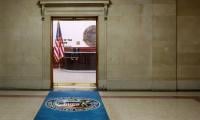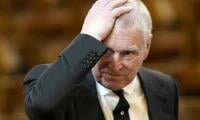The cipher without a conspiracy
The politics of the cipher saga may no longer be newsworthy but the surrounding issues have a lasting place in Pakistan’s domestic dynamics and foreign policy. And there is a need to understand them, before another controversy hits us. Basically these issues are: US-Pakistan relations, the army’s relationship with Washington through Pentagon and the intelligence agencies, with whom it has had a working equation for decades, and the civil-military balance of power.
We need to begin though with the cipher story. After losing power, the PTI chairman realized that being in the opposition the shoe was on the other foot, and he would be the target of a ruthless retribution by his political opponents now in power. So he might need big powers’ support and intervention especially that of the US which exercised considerable influence in Pakistan.
Imran Khan thus walked back from his allegations of the US-inspired conspiracy – but not quite. He absolved Washington of conspiring to overthrow him but with a caveat: making it look not as the conspirator or co-conspirator but an accessory or associate. This middle way, basically to save face among his supporters, left enough suspicion in their minds about America’s role, which has since been reignited by the leaked text of the cipher.
If there was a conspiracy it had to be hatched in contacts between the state’s high command and Washington behind the back of the then prime minister. Now how do we prove that? We cannot. But what we can do is look at the circumstantial evidence, and by analyzing it in light of the issues mentioned in the opening paragraph above we might get some idea of what may have likely happened.
Here are some questions. The central question of course is: who was the instigator? The Pakistani side or Washington? If it was the latter, was it dealing with a neutral or reluctant institution of state that had to be prodded to bring down the government? There were likely institutional issues with Imran Khan, but did that necessarily need going to the Americans to deal with him? And if the US was also unhappy would it not just wait and watch the situation rather than get involved? Let us try to find the answers.
Here a reference to relations between the army and Washington is important. The fact is that factors that have historically attracted America’s interest in Pakistan have been primarily military and intelligence-related with a strong covert element. Given the nature of the relationship, the military establishment had for obvious reasons been the main player in these ties almost from the beginning going back to Ayub Khan’s time as the defence minister in the early 1950s. It has considered this relationship as its preserve. The aid and the political support that came with it strengthened not only Pakistan’s defence capability but also the military’s political profile and its leverage against the civilians.
For the US, it was not Pakistan that was important but the services it provided – especially through its army. But in American eyes once the need ended so did the relationship. However, Pakistan’s civil-military elite who had become addicted to the relationship never burnt bridges with Washington. The Pakistan Army especially kept in touch with the US military, despite the imbalance in the two sides’ expectations of the relationship.
The US too did not write off Pakistan. It was a need-based relationship and one never knew when the need might arise again. After nearly a decade of troubled relations because of the failing Afghanistan war, this need was once again on the horizon with the American withdrawal from Afghanistan. And the army was hoping to rekindle the relationship when Imran Khan struck. It was not just the ‘absolutely not’ remark. The army has always been able to work around politicians’ denials. Didn’t they do it on the drones issue?
The way action is now being taken against the PTI signifies a much bigger problem that went beyond the May 9 incidents. It is no secret that the army’s relations with the former prime minister had soured since the Faiz Hameed issue. And the reasons were many, principal among them the concern that as Prime Minister Imran Khan might threaten the civil military balance of power. The immediate concern was of course the likely damage to relations with the US and other ‘benefactors’ like Saudi Arabia – to the detriment of institutional interests and, in its view, at a cost to the national interests. The simple fact is that there was an unwillingness to relinquish institutional control over critical foreign policy issues that traditionally lay in one institution’s domain.
Washington also was unhappy with Imran Khan for its own reasons. And the former prime minister’s visit to Moscow was not the sole reason. The visit came at a wrong time and at the head of the long list of actions and statements by Imran Khan since the time before he came to power. It was just the peg the US hung its ‘grievances’ on.
Washington is used to the anti-American rhetoric of politicians. It knows they have political compulsions to appear to be close to public opinion. And they should be judged by their actions not by words. Frankly, in the case of Imran Khan this gap between rhetoric and reality was either narrowing or becoming confusing and unpredictable. And one could see that Pakistan’s other allies like Saudi Arabia which had shared interests in Pakistan along with the US were having similar issues with him.
For long Washington could not quite make out whether Imran Khan was truly a nationalist they could not work with, or merely a charismatic celebrity-populist they could live with whose popularity among the idealistic youth, despairing masses and angry diaspora had got ahead of his judgement. The visit to Moscow at a very bad moment clarified the picture. Whatever he was, it would be difficult to work with him. Though they would have liked to see the back of him, there were still no strong reasons for the Americans to try to remove him.
The reality is that political dynamics in Pakistan have nearly always functioned fairly autonomously, and the primary, though not always the sole, stimulus for the rise and fall of governments has been domestic. Washington had been one of the external pillars to elitist Pakistan’s organizing idea. The US may no longer be the external pillar of the system for Pakistan but it does remain a crutch, a potential strategic and financial threat, and the largest trading partner. The relationship is not just led by America’s needs; it is driven in equal measure by Pakistan’s needs. No wonder successive governments in Pakistan have craved closer ties with the US, reflecting the leadership’s dependency syndrome more than Washington’s control of Pakistan.
The US does try to influence and sometimes manipulate policies in Pakistan. But it does so by established diplomatic messaging, often in coercive language that comes naturally to Washington, and by exploiting the financial or security vulnerability of a regime without having to change it or holding out written threats of change. To preempt that, weak and dependent regimes in Pakistan have often been mindful of any negative impact of their policies on Washington so as to avoid them where possible. The fact is: if you cannot stand on your own, you cannot stand up to the US.
Bottom line: by the beginning of 2022, it had become obvious the same lot had reasons to get rid of Imran Khan with the same ease with which they had helped him come to power. No outside help was needed. The game had been played successfully for decades as politicians allowed it to happen. The US and the establishment’s interests being the same, there was no need for Washington to do anything.
If there was a conspiracy, would Donald Lu be so stupid as to tell the ambassador? The cipher issue is first and foremost about US-Pakistan relations, not about regime change. You will not find evidence, much less proof in it, of a conspiracy.
The writer, a former ambassador, is adjunct professor at
Georgetown University and visiting senior research fellow
at the National University of Singapore.
-
 Emilia Clarke Reveals Real Price Of Playing Daenerys In 'Game Of Thrones'
Emilia Clarke Reveals Real Price Of Playing Daenerys In 'Game Of Thrones' -
 Ex-Chicago Mayor Hit With Lawsuit Over Unpaid Credit Card Bills
Ex-Chicago Mayor Hit With Lawsuit Over Unpaid Credit Card Bills -
 Andrew Risks His Relationships With Princess: ‘She’s Supporting The Abused And It’s Festering’
Andrew Risks His Relationships With Princess: ‘She’s Supporting The Abused And It’s Festering’ -
 Harry Styles Unveils New Album After Cryptic Posters Spark Fan Frenzy
Harry Styles Unveils New Album After Cryptic Posters Spark Fan Frenzy -
 Prince Harry Ready To Return To The UK To King Charles But It’ll Depend On How THIS Goes
Prince Harry Ready To Return To The UK To King Charles But It’ll Depend On How THIS Goes -
 Why Isn't King Charles Mourning Death Of His Father's First Cousin?
Why Isn't King Charles Mourning Death Of His Father's First Cousin? -
 Nicole Richie Breaks Silence On Her Daughter's Name Change
Nicole Richie Breaks Silence On Her Daughter's Name Change -
 Truth Behind Chris Noth, Sarah Jessica Parker's Ongoing Feud Revealed
Truth Behind Chris Noth, Sarah Jessica Parker's Ongoing Feud Revealed -
 Baseless Gender Identity Rumors Targeted At Bettijo Hirschi After Todd Bridges Split
Baseless Gender Identity Rumors Targeted At Bettijo Hirschi After Todd Bridges Split -
 'Harry Potter' TV Series Roped In Hans Zimmer For Score
'Harry Potter' TV Series Roped In Hans Zimmer For Score -
 Amy Robach, T.J. Holmes Make Daring Invite To Exes Marilee, Andrew
Amy Robach, T.J. Holmes Make Daring Invite To Exes Marilee, Andrew -
 Louis Tomlinson Gushes Over Harry Styles' Talent
Louis Tomlinson Gushes Over Harry Styles' Talent -
 Brian Austin Green Says THIS Relationship Left Him Feeling 'not Good Enough'
Brian Austin Green Says THIS Relationship Left Him Feeling 'not Good Enough' -
 Amy Robach, T.J. Holmes Shun Former Friends At 'GMA'?
Amy Robach, T.J. Holmes Shun Former Friends At 'GMA'? -
 Timothée Chalamet Shares Nervous Experience From 'Marty Supreme'
Timothée Chalamet Shares Nervous Experience From 'Marty Supreme' -
 'Andrew Leaving One Mansion To Go To Another Mansion'
'Andrew Leaving One Mansion To Go To Another Mansion'



